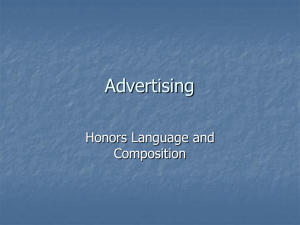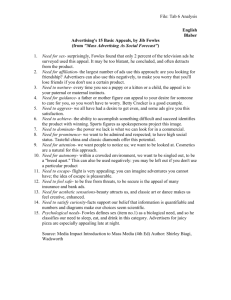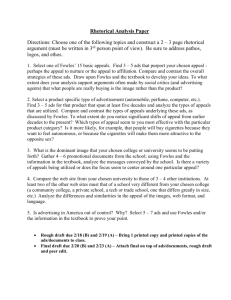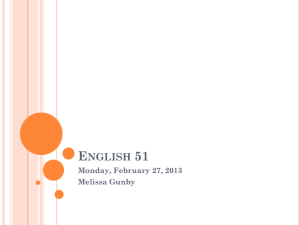102 Expected outcome..
advertisement
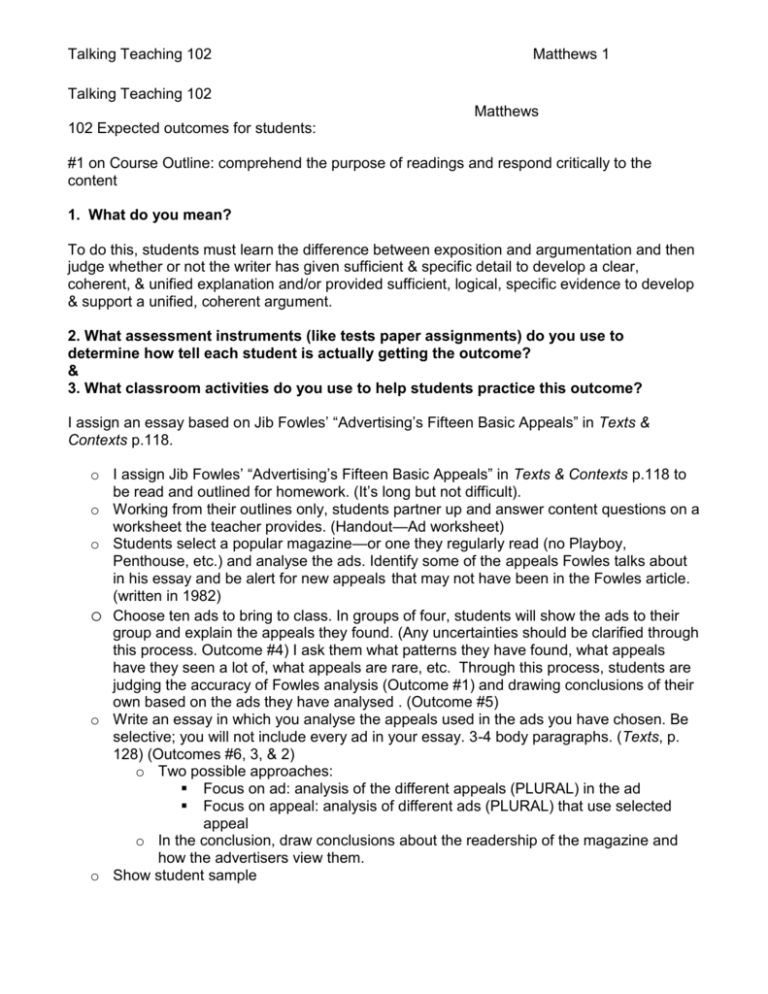
Talking Teaching 102 Matthews 1 Talking Teaching 102 Matthews 102 Expected outcomes for students: #1 on Course Outline: comprehend the purpose of readings and respond critically to the content 1. What do you mean? To do this, students must learn the difference between exposition and argumentation and then judge whether or not the writer has given sufficient & specific detail to develop a clear, coherent, & unified explanation and/or provided sufficient, logical, specific evidence to develop & support a unified, coherent argument. 2. What assessment instruments (like tests paper assignments) do you use to determine how tell each student is actually getting the outcome? & 3. What classroom activities do you use to help students practice this outcome? I assign an essay based on Jib Fowles’ “Advertising’s Fifteen Basic Appeals” in Texts & Contexts p.118. o I assign Jib Fowles’ “Advertising’s Fifteen Basic Appeals” in Texts & Contexts p.118 to be read and outlined for homework. (It’s long but not difficult). o Working from their outlines only, students partner up and answer content questions on a worksheet the teacher provides. (Handout—Ad worksheet) o Students select a popular magazine—or one they regularly read (no Playboy, Penthouse, etc.) and analyse the ads. Identify some of the appeals Fowles talks about in his essay and be alert for new appeals that may not have been in the Fowles article. (written in 1982) o Choose ten ads to bring to class. In groups of four, students will show the ads to their group and explain the appeals they found. (Any uncertainties should be clarified through this process. Outcome #4) I ask them what patterns they have found, what appeals have they seen a lot of, what appeals are rare, etc. Through this process, students are judging the accuracy of Fowles analysis (Outcome #1) and drawing conclusions of their own based on the ads they have analysed . (Outcome #5) o Write an essay in which you analyse the appeals used in the ads you have chosen. Be selective; you will not include every ad in your essay. 3-4 body paragraphs. (Texts, p. 128) (Outcomes #6, 3, & 2) o Two possible approaches: Focus on ad: analysis of the different appeals (PLURAL) in the ad Focus on appeal: analysis of different ads (PLURAL) that use selected appeal o In the conclusion, draw conclusions about the readership of the magazine and how the advertisers view them. o Show student sample Talking Teaching 102 Matthews 2 o Peer Review (Handout—Peer Review, Ad Essay) leading to rewrite. Students are responsible for their own proofreading (Outcome #7) I evaluate the essay using an assessment rubric. (Essay Assessment rubric)
